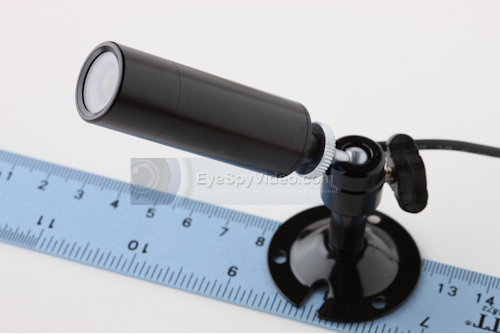Advanced Features
SPECIALIZED & ADVANCED VIDEO RECORDING
OPTIONS / FEATURES
1. What is 'motion' or 'alarm' recording?
2. What do I need to tape ONLY when action is present?
3. Can I use a standard consumer VCR for alarm recording?
4. Can I use alarm recording for multiple cameras?
5. Can I use wireless equipment for alarm recording?
7. If I use an alarming quad, do I need an alarm vcr as well?
8. What is video motion detection?
Q1: What is motion or alarm recording?
A1: Motion or alarm recording is achieved when a sensor reacts to a corresponding "stimulus" and automatically starts a vcr or dvr recording for a certain period of time (5,10 seconds, etc.). This is usually found as movement in presence of PIR (passive Infrared) motion detectors as are commonly seen in alarm systems around homes and businesses nowadays. Only, instead of activating an alarm response- the sensor or switch activates recording. Back to top-->
Q2: What do I need to tape ONLY when action is present?
A2: You must use a special "alarm-capable" vcr / dvr which has alarm ports + an external sensor switch to activate (i.e. PIR sensor or reed switch) + the camera itself. There are devices available which feature built-in "video motion detection". See below for more info on these. Back to top-->
Q3: Can I use a standard consumer VCR for alarm recording?
A3: No. Alarm recording requires a vcr or dvr with special ports to connect alarm trigger cables into. There are some devices emerging which act as recorder activators, but currently very limited in their features and somewhat crude for serious covert or security surveillance purposes. Until one comes along that's a little better, we strongly recommend going with an alarm capable vcr. Back to top-->
Q4: Can I use alarm recording for multiple cameras?
A4: Yes, please refer question 6 below. Back to top-->
Q5: Can I use wireless equipment for alarm recording?
A5: Yes, the video output from the wireless receiver(s) simply plugs into the video input on the unit. However, sending a wireless motion signal can get a little tricky. Most wireless PIR systems are expensive and can't achieve the range of the wireless camera transmitter. Back to top-->
A6: An alarm quad or processor is a device which allows viewer to see multiple cameras on the screen at once. It's just like a regular quad or processor with one key difference. Alarm ports connected to trigger switches allow for external devices (like pir motion sensors) to activate desired alarm response- such as showing a full screen of one of the particular cameras (or zones) for a specified period of time. Back to top-->
Q7: If I use an alarming quad, do I need an alarm vcr as well?
A7: Not necessarily- but it is highly recommended. If you are using a quad or processor with multiple alarm in ports- you can record with any consumer vcr. However, you must keep vcr recording at all times. Consumer vcrs (when used in EP mode with a T-160 video tape) have a maximum record time of 8 hours- which means a lot of changing tapes. Back to top-->
Q8: What is video motion detection and it's pros & cons?
A8: Advanced video motion detection is a relatively new technology, but one that has made leaps and bounds just recently. Because of the new software's reliability, this has become a must-have feature for quality DVR digital video recorders. For this reason, all Eyespyvideo.com DVR units offer the latest in motion detection technology. Basically, this is an advanced software feature which can detect motion in a camera's field of view and begin recording based on movement taking place anywhere in the camera's veiw. This type of detection can in most cases be adjusted in sensitivity. As well, a user can select and deselect areas in each camera's view for motion detection function. Advanced video motion detection erases the need for bulky and expensive PIR motion sensors.
Older types of video motion detection software relied upon reactions to lighting conditions or required the used to place "marker" areas in a camera's field of view which would trigger recording when manipulated. The newer video motion detection software found in Eyespyvideo.com DVR units senses motion down to a single pixel unit, so its motion-activated recording is far more precise and consistent than many other systems which are (still) available in the marketplace.
Back to top-->


 Cart is empty
Cart is empty
 Help
Help

